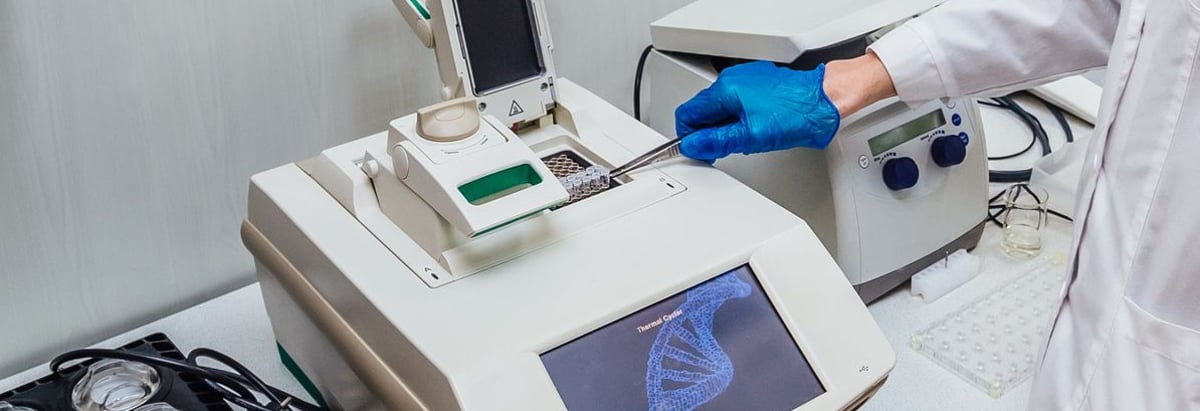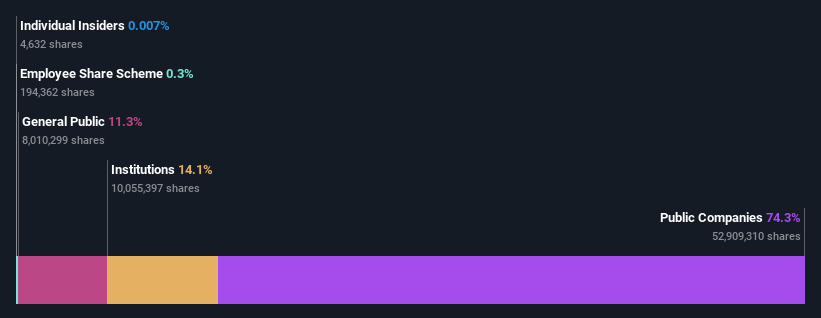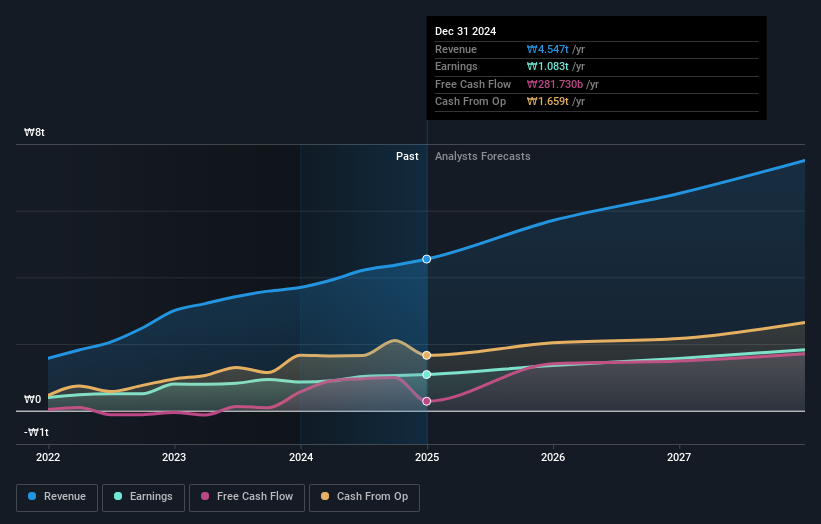- South Korea
- /
- Life Sciences
- /
- KOSE:A207940
Public companies account for 74% of Samsung Biologics Co.,Ltd.'s (KRX:207940) ownership, while institutions account for 14%

Key Insights
- Samsung BiologicsLtd's significant public companies ownership suggests that the key decisions are influenced by shareholders from the larger public
- A total of 2 investors have a majority stake in the company with 74% ownership
- 14% of Samsung BiologicsLtd is held by Institutions
Every investor in Samsung Biologics Co.,Ltd. (KRX:207940) should be aware of the most powerful shareholder groups. And the group that holds the biggest piece of the pie are public companies with 74% ownership. That is, the group stands to benefit the most if the stock rises (or lose the most if there is a downturn).
Meanwhile, institutions make up 14% of the company’s shareholders. Institutions will often hold stock in bigger companies, and we expect to see insiders owning a noticeable percentage of the smaller ones.
In the chart below, we zoom in on the different ownership groups of Samsung BiologicsLtd.
See our latest analysis for Samsung BiologicsLtd

What Does The Institutional Ownership Tell Us About Samsung BiologicsLtd?
Many institutions measure their performance against an index that approximates the local market. So they usually pay more attention to companies that are included in major indices.
We can see that Samsung BiologicsLtd does have institutional investors; and they hold a good portion of the company's stock. This implies the analysts working for those institutions have looked at the stock and they like it. But just like anyone else, they could be wrong. It is not uncommon to see a big share price drop if two large institutional investors try to sell out of a stock at the same time. So it is worth checking the past earnings trajectory of Samsung BiologicsLtd, (below). Of course, keep in mind that there are other factors to consider, too.

Hedge funds don't have many shares in Samsung BiologicsLtd. Looking at our data, we can see that the largest shareholder is Samsung C&T Corporation with 43% of shares outstanding. Meanwhile, the second and third largest shareholders, hold 31% and 6.6%, of the shares outstanding, respectively.
To make our study more interesting, we found that the top 2 shareholders have a majority ownership in the company, meaning that they are powerful enough to influence the decisions of the company.
While studying institutional ownership for a company can add value to your research, it is also a good practice to research analyst recommendations to get a deeper understand of a stock's expected performance. There are plenty of analysts covering the stock, so it might be worth seeing what they are forecasting, too.
Insider Ownership Of Samsung BiologicsLtd
The definition of an insider can differ slightly between different countries, but members of the board of directors always count. Management ultimately answers to the board. However, it is not uncommon for managers to be executive board members, especially if they are a founder or the CEO.
I generally consider insider ownership to be a good thing. However, on some occasions it makes it more difficult for other shareholders to hold the board accountable for decisions.
Our most recent data indicates that insiders own less than 1% of Samsung Biologics Co.,Ltd.. As it is a large company, we'd only expect insiders to own a small percentage of it. But it's worth noting that they own ₩4.9b worth of shares. It is good to see board members owning shares, but it might be worth checking if those insiders have been buying.
General Public Ownership
The general public-- including retail investors -- own 11% stake in the company, and hence can't easily be ignored. This size of ownership, while considerable, may not be enough to change company policy if the decision is not in sync with other large shareholders.
Public Company Ownership
It appears to us that public companies own 74% of Samsung BiologicsLtd. We can't be certain but it is quite possible this is a strategic stake. The businesses may be similar, or work together.
Next Steps:
It's always worth thinking about the different groups who own shares in a company. But to understand Samsung BiologicsLtd better, we need to consider many other factors.
I always like to check for a history of revenue growth. You can too, by accessing this free chart of historic revenue and earnings in this detailed graph.
Ultimately the future is most important. You can access this free report on analyst forecasts for the company.
NB: Figures in this article are calculated using data from the last twelve months, which refer to the 12-month period ending on the last date of the month the financial statement is dated. This may not be consistent with full year annual report figures.
New: Manage All Your Stock Portfolios in One Place
We've created the ultimate portfolio companion for stock investors, and it's free.
• Connect an unlimited number of Portfolios and see your total in one currency
• Be alerted to new Warning Signs or Risks via email or mobile
• Track the Fair Value of your stocks
Have feedback on this article? Concerned about the content? Get in touch with us directly. Alternatively, email editorial-team (at) simplywallst.com.
This article by Simply Wall St is general in nature. We provide commentary based on historical data and analyst forecasts only using an unbiased methodology and our articles are not intended to be financial advice. It does not constitute a recommendation to buy or sell any stock, and does not take account of your objectives, or your financial situation. We aim to bring you long-term focused analysis driven by fundamental data. Note that our analysis may not factor in the latest price-sensitive company announcements or qualitative material. Simply Wall St has no position in any stocks mentioned.
About KOSE:A207940
Samsung BiologicsLtd
Together with its subsidiaries engages in the manufacturing of biopharmaceuticals products in South Korea, Europe, the United States, and internationally.
Flawless balance sheet and fair value.
Similar Companies
Market Insights
Community Narratives



